
Professor Craig Cary
With global models drawing an ever-clearer picture of unchecked warming, there has never been a more urgent time to answer the big questions about climate change's vast, frozen elephant in the room: Antarctica. As top Kiwi scientists fly south for New Zealand's 60th research season on the ice, science reporter Jamie Morton takes a look at some of the fascinating studies planned for this summer...
1. Antarctica from the air
Antarctica's sea ice, swelling and retreating with the seasons like a breathing organ, plays a crucial yet poorly understood role in our planet's climate system.
The immensely complex natural sequence helps maintain the cold conditions that ultimately sustain the continent, while also influencing storms across the Southern Hemisphere and affecting the amount of heat the Southern Ocean can absorb as the Earth warms.
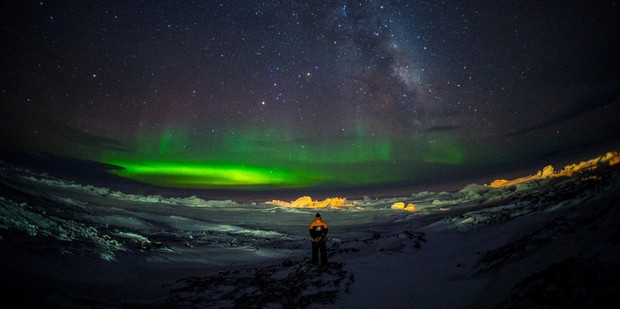
Experimental observations during the polar winter have shown increased losses of ozone that were caused by solar-generated events.
But some of the sea ice's most intriguing behaviour isn't captured by the giant Earth System Model (ESM) used to predict our planet's future climate, prompting a team of Kiwi researchers to fill in the gaps.
They'll do it using an airborne electromagnetic device called the "EMBird", which will be slung below a DC3 utility aircraft to map snow and sea ice thickness as it flies over the southwest Ross Sea.
The research team, from Otago University, Canterbury University, the National Institute of Water and Atmosphere (Niwa) and US collaborators, wants to tease out the influence on coastal sea ice of the very cold water that emerges from beneath ice shelves, the huge glaciers that float on the ocean.
"We have flown the EMBird from a helicopter before, but it has never been flown below an aircraft in Antarctica," says project leader Professor Pat Langhorne, of Otago University.
The observations they collect will contribute toward a new part of an improved ESM able to create region-specific forecasts of future climate for New Zealand and its nearest neighbours.
"There will be the challenges of the weather and inevitable delays and the preparation of the aircraft - we have to change from skis to wheels and back."
2. Drilling down into the ice world's past
Earth's future sea level - projected to be around a metre higher by 2100, but potentially much higher if carbon emissions continue unabated - is one of the most worrying prospects of climate change.
We know the biggest potential contributor to sea level rise is ice stored in Antarctica - oceans could rise by an estimated average 60m if all of it melted - but scientists still can't put their finger precisely on how the continent is responding.
A collaboration led by Dr Gavin Dunbar, of Victoria University's Antarctic Research Centre, is zeroing in on a region thought to be particularly susceptible to collapse in a warmer world.
At the Ross Ice Shelf, near the Kamb ice stream and 1000km from Scott Base, they plan to drill deep into rocks beneath the ocean and ice to reveal a detailed record of the environment in which they were once deposited, millions of years ago.
"By reading the rock we can get some idea of how extensive the ice was under climates of the past when Earth was warmer than today," Dunbar says.
"This helps us calibrate our computer models that are trying to project how much and how fast sea level will rise in future."
Over November and December, the team will pin-point a drilling target, revealed by generating sound waves with explosives that travel through the ice and rock and bounce back when they hit changing rock type, up to 500m below the surface.
"Fingers are crossed that we don't get any unpleasant surprises from nature."
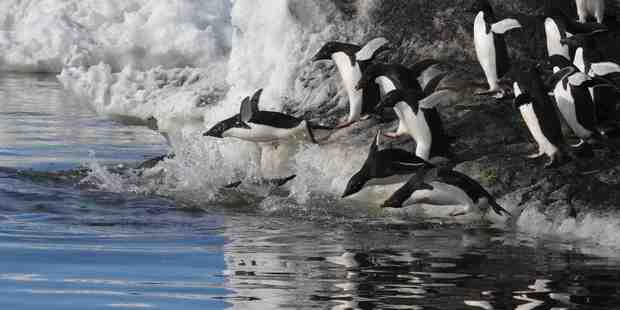
Adelie penguins plunge into the water. Credit: Brian Karl
Beyond seeing whether the record will give them the kind of information they're after, the seismic data should also be useful for ongoing studies of Antarctic glaciology and informing the bigger picture of how Antarctica works.
"We also hope to deploy an array of weather stations in this remote part of Antarctic to get some idea of how the atmosphere circulates there for the first time."
The expedition would face the ever-present dangers that come with working in freezing conditions.
"However, the ice shelf itself is probably the most featureless part of Antarctica, so fingers are crossed that we don't get any unpleasant surprises from nature."
3. A frosty snapshot from the Friis Hills
Meanwhile, at the spectacular Friis Hills at the head of one of Antarctica's famous Dry Valleys, researchers will be leading another ambitious drilling project.
Drilling core samples taken from the sea floor not far from Scott Base, together with models, suggest at a much warmer time some 16 million years ago, when average temperatures were up to 4C higher than today, the Antarctic Ice Sheet margin retreated inward.
But scientists want more definitive evidence from inland areas and have looked to the Friis Hills.
Hidden among a landscape reminiscent of the Martian surface, deposits of ancient lake and river sediments exposed by digging shallow pits into a frozen, concrete-hard surface have revealed fossil leaves and pollen, indicating an environment very different from today's.
"Historical knowledge is powerful - it offers information that can guide and inform our future."
When these sediments were forming, mean summer temperatures were an average 6C-7C and the region was receiving as much as 3000mm precipitation each year. Today, there's no hint of rain or snow.
The sediments already dug out have offered some enticing clues but much
of the climate treasures remain hidden deep beneath the ground, within a frozen pile some 60m thick.
"Historical knowledge is powerful - it offers information that can guide and inform our future, helping us anticipate and prepare for coming change," says GNS Science geologist Dr Richard Levy.
"In a similar way, Earth's geological records offer insight into past climate and allow us to examine environmental conditions during times when carbon dioxide levels were higher than today and similar to those that will be reached again if emission mitigation proposals do not succeed."
Levy and an international team of scientists, engineers, and drillers from New Zealand, Italy and the US will head to the hills to delve through the thick permafrost to recover a complete record of environmental change, spanning from the early to mid-Miocene.
To get the gear to the site, a tractor was required to tow it out of Scott Base and across a frozen McMurdo Sound before it was picked up and flown the rest of the way.
The drill team would be using a modified conventional coring system that pumps cold compressed air as a drilling fluid, with the frozen sediments to be sent back to a custom-built facility at Scott Base, then on to New Zealand.
4. Secrets of the Dry Valleys
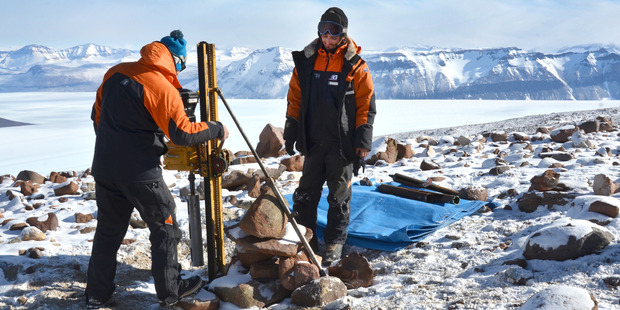
New Zealand scientists at work in the Dry Valley's in Antarctica.
Not far away, at another site in the Dry Valleys, Antarctic veteran Professor Craig Cary will be leading a $2.8 million joint study attempting to get a handle on the subtle shifts at the famous landmark.
Led by the Waikato University-based International Centre for Terrestrial Antarctic Research (Ictar), which Cary heads, the team will discover more about how climate change is affecting the area - and what effect humans are having on its sensitive environment.
"If climate change happens as predicted, there will be massive change in just about every aspect of this fragile environment," Cary says.
If climate change happens as predicted, there will be massive change in just about every aspect of this fragile environment.
For instance, warming glaciers would melt more extensively, creating a wetter overall environment in the valleys and dramatically changing the system.
Areas that were once isolated for thousands of years could quickly become connected.
"The Dry Valleys are also under increased pressure from tourism and we need to know how we handle that."
Cary said the project would create evidence-based maps of diversity and sensitivity in the valleys and pick out those areas where special management is needed.
It carried on much of the work that had already been led in the valleys by Ictar, along with the centre's international collaborative approach to research.
"We've rallied the top people in the country and overseas in the field for this."
5. Life beneath the ice
Antarctic sea stars are curious things. The soft, spongy echinoderms measure less than 10cm but they may live as long as a century.
The intriguing-looking species also have a taste for dead seals and the faecal material found on the seafloor seal colonies.
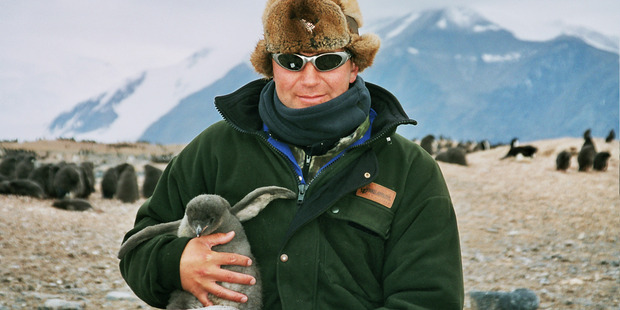
Landcare Research scientist Dr Phil Lyver.
Otago University marine scientist Dr Miles Lamare and his colleagues are interested in them because they could act as handy sentinels to figure out how marine species will respond to the changing oceans.
"The world is warming and acidifying, and Antarctic species are especially vulnerable to warming as the present polar seas are not only cold, but they are very temperature stable and have relatively low seawater pH," Lamare says.
"We therefore suspect that polar species and the communities they inhabit will be the first to experience the effects of warming and ocean acidification."
"We suspect that polar species and the communities they inhabit will be the first to experience the effects of warming and ocean acidification."
What was learned from Antarctic species could later be applied to those in New Zealand and around the world, he says.
Lamare and his team will use a remote-operated vehicle to collect samples from Cape Evans and take them back to labs in New Zealand, where they'll be reared for two years under present-day conditions, and under those predicted for Antarctica by the end of the century.
The team will look for any changes in their physiology and gene expression patterns, and assess how their offspring cope under simulated climate change.
"The research will tell us if there is adaptation from one generation to the next - and the basis of the adaptation."
6. Walking in Scott's footsteps
One might consider the Earth's magnetic field a giant energy shield.
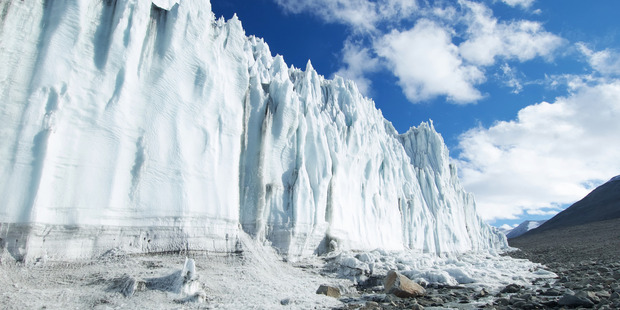
The Dry Valley's in Antarctica.
It stretches out into space and protects us from the solar wind, a stream of charged particles that constantly bombard the planet.
Without this geomagnetic field, the atmosphere as we know it would not exist.
Over time, the field is changing because of the dynamics of the Earth's interior, where it originates.
The South Magnetic Pole, where the geomagnetic field lines are directed vertically upwards, is a wandering point moving northwest away from the coast of Antarctica.
In January, GNS Science researchers Dr Tanja Petersen and Neville Palmer will spend two weeks collecting measurements at two areas of exposed rock.
One of the sites, at Cape Evans, was first measured by Captain Robert Falcon Scott's ill-fated Terra Nova Expedition in 1911. The other, at Lake Vanda in the Dry Valleys, was first measured in 1974.
Data has been gathered at the spots every few years since, helping us see the shifts in the strength and direction of the Earth's magnetic field.
From Scott Base, the pair will be flown 125km by helicopter to Lake Vanda, where they'll camp for four nights in small tents, before travelling on to Cape Evans.
During the day, they plan to set up a tripod mounted with instruments - placed exactly over a survey marker embedded in the rock - and spend hours taking measurements.
"Strong cold winds in the Dry Valleys could make this a challenging task," Petersen says.
The results will feed into a global database of geomagnetic observations, while also updating the exact location of the South Magnetic pole.
7. Solving an atmospheric enigma
If we want to better understand climate change driven by humans, we need to also look at variability caused by natural factors.
These include the intriguing transmission of solar energy from the Earth's upstream region through to our lower atmosphere.
Some experimental observations during the polar winter have shown increased losses of ozone caused by solar-generated events - particularly those stemming from dramatic explosions on the Sun, and geomagnetic storms that paint the dazzling aurora in polar winter skies.
In February, Dr James Brundell and PhD student Emma Douma, both of Otago University, will run a 24/7 experiment at New Zealand's Arrival Heights laboratory above Scott Base, constantly recording radio waves using a special antenna system.
Professor Craig Rodger, of Otago University, says gaining a clearer picture of how high-energy particles were affecting the atmosphere would help scientists better understand the near-Earth environment of space.
"Another reason is to understand the impact of those particles on the polar atmosphere, the chemical changes observed to happen due to those particles, and to try to work out how important a source of high-latitude natural climate variability this is."
A spin-off of the study, a collaboration with international climate modellers, would be its data contribution to the World Wide Lightning Location Network, helping to provide real-time locations of lightning all over the globe.
The Arrival Heights station, born as an auroral radar station in 1960, is located in a specially protected area to prevent disturbance to what remains an electromagnetically quiet and atmospherically clean site.
But naturally, the exposed position of the lab, overlooking US-operated McMurdo Station, could make conditions challenging.
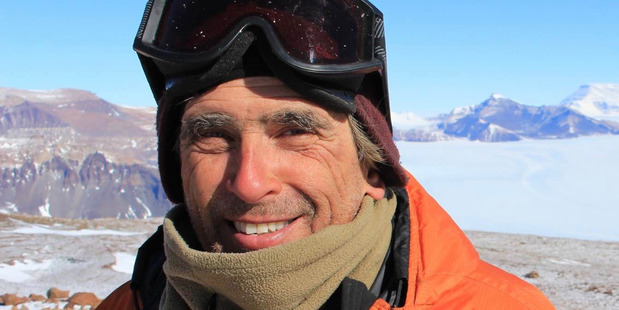
Professor Craig Cary of Waikato University in the Dry Valley.
"Over most of the year, this is a very cold and wind-blown place, putting our antenna under a lot of stress."
8. Peering inside Mt Erebus' belly
Mt Erebus, one of the first landmarks visitors to Scott Base see when they step off their aircraft, has loomed large in New Zealand's story in Antarctica.
Erebus is infamous for the 1979 air crash that killed 257 people but it is also the world's southernmost active volcano and one of a handful with a persistent lava lake.
A research team led by Dr Graham Hill aims to create an image of Mt Erebus' plumbing, or magmatic system, from source to surface.
Previous geophysical studies have suggested the crust within the Terror Rift - a zone of ancient faulting and volcanism along the West Antarctic Rift System's western margin - is thin under Erebus.
This would allow Hill's team to follow the magmatic pathway into the upper mantle, ultimately constructing a 3D image of the system and helping to assess what part the Terror Rift plays in the generation and movement of magma.
Erebus also has magma formed from the rare and poorly understood rock type phonolite, which has also been found in some volcanoes that have produced devastating eruptions, including Pompeii in 79AD.
The project aims to not only improve the knowledge of Antarctic geology but also to enable Antarctica to make a valuable contribution to understanding the mechanics of phonolitic magma systems across the world.
The researchers also expect the cutting-edge survey methodology and modelling techniques they'll use to help similar work being carried out back home.
9. Can industrial emissions hurt penguins?
Antarctica, where even the slightest stain on the ice must be cleaned up under strict guidelines, is celebrated as the last pristine, unspoilt environment on the planet.
But human impact on the continent - even from thousands of kilometres away - has still been enough to concern scientists about potential harm to its unique species.
A toxic organic form of mercury called mono-methylmercury can have detrimental effects on seabirds and is known to build up inside animal bodies."
Over recent times, increased emissions of heavy metals from rapidly growing economies on the other side of the world are worrying researchers. Trace elements in particular, especially mercury, may be transported through the atmosphere to the fragile continent.
Most notably, a toxic organic form of mercury called mono-methylmercury is causing concern. It can have detrimental effects on seabirds and is known to build up inside animal bodies and take longer to purge.
A project led by Landcare Research's Dr Phil Lyver will focus on two of Antarctica's most famous residents - the emperor and adelie penguin - and investigate how mercury exposure might differ by age, sex, species and other factors.
Lyver says the research, to take place around the Ross Sea, will also assess any links between mercury levels and the "trophic level" at which each individual bird sits in the food chain.
"Information about trophic level may assist with the interpretation of mercury cycling," Lyver says.
"For example, it can help to determine the sources of mercury at the base of the food web.
"It can also help to distinguish whether changes in mercury levels observed over time are attributable to changes in mercury levels in the environment or changes to diet composition."
Both species made ideal candidates because mercury could be effectively picked up by analysing their feathers, and the birds can be found in large numbers at reasonably accessible places.
The project would be carried out at the world's largest Adelie penguin rookery at Cape Adare - home to some 500,000 breeding pairs - before the findings would be compared with results from Cape Crozier and Terra Nova Bay.
The data would also contribute to a wider study to understand the full extent of Adelie penguin foraging ranges in the Ross Sea, and inform policy discussions around the setting of boundaries for a proposed marine protected area for the region.
10. The great annual penguin count
It might seem like the toughest job ever: counting hundreds of thousands of adelie penguins.
Yet it's a job New Zealand has undertaken each year in the Ross Sea region since 1981.
This long-term monitoring programme allows scientists to relate changes in penguin numbers to weather, sea ice and other environmental variables, and help them check whether commercial exploitation, such as fishing, is having any impact.
The census is conducted during a two-week window in late November and early December, when males are incubating eggs and females are at sea foraging.
"It might seem like the toughest job ever: counting hundreds of thousands of adelie penguins."
This summer, the work will be led by Antarctica New Zealand's Fiona Shanhun, with help from Dr Phil Lyver and Kerry Barton of Barton Solutions.
High resolution aerial photos of colonies on Ross Island and along the Victoria Land coast will be taken through the open door of a helicopter while the pilot flies above the colonies.
"The predetermined flight lines ensure complete coverage of the colonies while minimising the number of passes overhead," Shanhun says.
Back in New Zealand, the photos are stitched together and penguins are counted using a special software programme.
"This still requires human guidance, but it is a vast improvement on the manual counting method that was used up until 2010."
The data is eventually reported to the Convention for the Conservation of Antarctic Marine Living Resources (CCAMLR), and is also useful for planning for new marine protection and comparing penguin numbers elsewhere on the continent.

To help do something about the climate change and global warming emergency, click here.
Sign up for our free Global Warming Blog by clicking here. (In your email, you will receive critical news, research, and the warning signs for the next global warming disaster.)
To share this blog post: Go to the Share button to the left below.

Be the first to comment
Sign in with